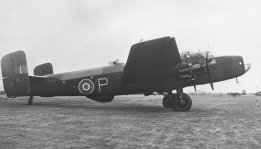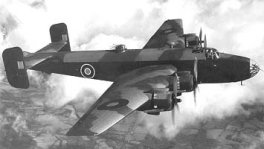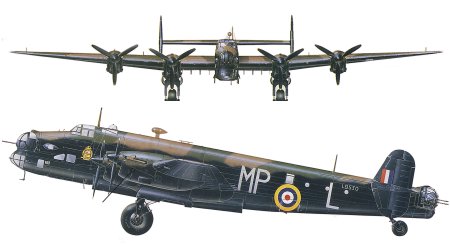
Handley Page Halifax
Its reputation has been overshadowed to some extent by its great contemporary, the Lancaster. But at its peak the Handley Page Halifax equipped 34 squadrons of RAF Bomber Command, and in 75,532 sorties over Europe between 1940 and 1945 the type dropped 231,263 tonnes (227,609 tons) of bombs.
It was in some respects the best aircraft in its class, gifted with great bomb-carrying capacity, toughness and the strength to survive when hit.
The Halifax was also the most versatile RAF heavy bomber. Remembered for nocturnal raids over Europe, the Halifax took on many duties, including pathfinder, ambulance, freighter, glider-tug, personal transport and maritime reconnaissance aircraft.
The Halifax offered as much protection as feasible, but flying this bomber was a dangerous business, especially during the bloody campaign over Berlin (November 1943 - March 1944), which cost the RAF 1,000 aircraft to the barrage of anti-aircraft artillery and swarms of Luftwaffe night-fighters encountered on every sortie. Every man in a Halifax crew shared a bond. Some of the most courageous pilots were those who bought the Halifax home burning and crippled from battle damage - to a safe landing.
As one of the four-engined bomber types which provided the backbone of the Royal Air Force's night bombing offensive against Germany the Halifax was a vital cog in the Allied war effort. Although the Avro Lancaster grabbed the glory, its pilots and crews found the Halifax to be a superb heavy bomber with formidable striking power. It also flew a wide variety of missions, ranging from anti-submarine patrols to para-dropping agents into occupied Europe.
 |
 |
 |
| The black undersides were designed to hide the aircraft from searchlights when night bombing. Although overshadowed by the Lancaster, the Halifax was an effective combat aircraft. |
The Halifax Mk VIII transport variant, distinguished by its lack of gun turrets and its bulging belly, could carry 3,600 kgs (7,920 lbs) of freight. |
The Halifax Mk III introduced the Bristol Hercules radial engine, an extended-span wing, new tailfins and a long glazed nose without a gun turret. The enchanced performance endeared it to crews. |
|
Handley Page Halifax (Technical Specification) |
| Role |
Seven seat long-range heavy bomber, troop transport and long-range anti-submarine aircraft |
| Manufacturer |
Handley Page |
| Maximum Speed |
500 kmh (281 mph) |
| Maximum Range |
2,000 km (1,240 miles) |
| Ceiling |
7,315 meters (24,000 feet) |
Weight
Empty
Maximum Takeoff |
17,345 kg (38,159 lbs)
29,484 kg (64,865 lbs) |
Dimensions
Wingspan
Length
Height
Wing Area |
31.75 meters (104 ft)
21.82 meters (72 ft)
6.32 meters (21 ft)
118.45 square meters (1,275 sq ft) |
| Engines |
Four Bristol Hercules XVI 14-cylinder radial piston engines each provides 1,204-kW (1,613-hp) |
| Armament |
Nine 7.7 mm (0.303 cal) machine-guns in the nose and quad dorsal and tail turrets, plus up to 5,897 kg (13,200 lbs) of bombs |
Photo Gallery
Click here to submit your photo
| Have A Passion For Aircraft? |
Subscribe to our 14 series FREE newsletter
delivered weekly on World War 2 Aircraft factfile... |
| NB:- We hate spam as much as you do, so your email address will NEVER be shared with or sold to anyone else. That's a Guarantee. |
|
|





